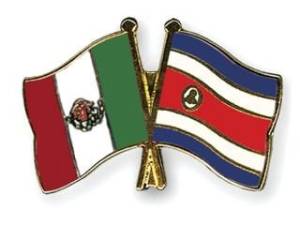Costa Rica and Mexico Agree on New Air Route for Cuban Migrants
 HAVANA TIMES — The Costa Rican and Mexican governments agreed today to facilitate direct flights for Cuban migrants from the Central American country to Mexico. The flights will cost $790 USD, double the average round trip fare.
HAVANA TIMES — The Costa Rican and Mexican governments agreed today to facilitate direct flights for Cuban migrants from the Central American country to Mexico. The flights will cost $790 USD, double the average round trip fare.
On Friday a second group of 184 Cubans flew from Costa Rica to El Salvador and then were put on buses to the border of Guatemala and Mexico. That trip costs the migrants US $545.
The final destination for the Cubans is the United States where they will be welcomed under the Cuban Adjustment Act, which besides government assistance puts them on a fast track for permanent residency.
The Cubans are seen as a small gold mine for the private transport companies involved, as the desperate migrants, with help from their families or friends can be fleeced for exorbitant ticket prices. Many had already faced theft and extorsion by traffickers during their journey from Ecuador to Costa Rica.
As the year began some 8,000 Cubans were stuck in Costa Rica due to Nicaragua closing off its border to them.

After the San Jose government negotiated an air lift to El Salvador and bus journey to Mexico, the first flight took place on January 13 and the second on Thursday night. Another six similar excursions are set for the rest of February.
Now, those able to pay the higher price, will be able to fly directly to Mexico. The first flights are expected in the second half of February, said the announcement from the Costa Rican government.
“The good will of the Mexican authorities will allow an increase the number of flights [carrying the Cuban migrants] leaving our country and making the journey easier, while speeding up the exit of the migrants.”
The slow pace of the trips and the desperation of the migrants reportedly led over 2,000 to find coyotes (human traffickers) to accompanying them overland crossing Nicaragua, Honduras and Guatemala before reaching Mexico.
